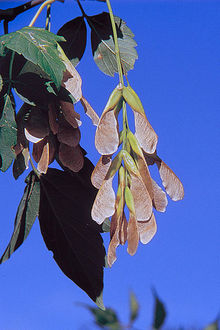Researchers recently established the link between boxelder seeds and a fatal condition in horses. Boxelder seeds, if eaten, can cause a fatal condition in horses called seasonal pasture myopathy, or SPM.

Toxic seeds of boxelder tree
Research at the University of Minnesota established the link between hypoglycin A, a chemical in boxelder seeds, and the resulting internal problems that cause seasonal pasture myopathy.
Horses afflicted with seasonal pasture myopathy show signs typical of other muscle “tying up” disorders, including reluctance to move, muscle weakness/stiffness, increased periods of lying down with difficulty getting up, red-brown urine and rapid respiration/difficulty breathing, according Carrie Hammer, North Dakota State University Extension Service equine specialist.
The disease progresses rapidly, with reports of 75 percent of the horses that develop the condition dying within 72 hours.
Recent research at the University of Minnesota established the link between hypoglycin A, a chemical in the boxelder seeds, and the resulting internal problems that end in the death of the animal. Boxelder is a species of maple.
“However, many unknowns remain,” Hammer says. "How many seeds does it take to cause problems? Do different horse breeds respond differently? Are there other maple species that have seeds that cause similar problems? Much work remains to find answers to these questions and others.”
Despite the potentially deadly impact of this problem, horse owners can minimize the risk to their animals. For example, horses that died from SPM were in highly overgrazed pastures and did not receive additional food, such as hay or grain.
“The average horse requires 2 to 3 percent of its body weight in good-quality feed per day,” Hammer says. ”If pasture alone cannot support this level of intake, additional feed should be provided.”
One important note is that not all boxelder trees bear seeds, NDSU Extension forester Joe Zeleznik says. Boxelders have separate male and female trees, and the seeds are found only on the females.
Horse owners may want to remove the female trees from a pasture or limit their horses’ access to the trees in the fall, the specialists say.
“However, eliminating female boxelder trees in a given pasture will not necessarily remove all risk of problems because wind may blow boxelder seeds a long distance,” Zeleznik says. “Also, boxelder trees that are cut down may require an application of a broadleaf herbicide to the stump to reduce or eliminate sprouting from the stump. Follow all label warnings and recommendations when using herbicides.”
